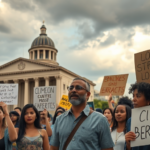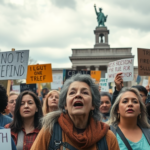Congressional Offices Urgently Need Racial Diversity
The call for racial diversity in congressional offices has reached a critical juncture, shedding light on the stark discrepancy between the demographics of American society and those wielding power within the halls of Congress. As highlighted in a recent report by the Joint Center for Political and Economic Studies, non-white individuals represent 41.1% of the U.S. population. Yet, in 2023, they comprised only 15.8% of top staff in U.S. Senate offices and 18% in the U.S. House of Representatives. Addressing this gap is essential for ensuring that Congress can adequately represent and serve its increasingly diverse constituencies.
The Diversity Gap in Congress
The underrepresentation of people of color among top congressional staff, including roles like chiefs of staff, legislative directors, and communications directors, underscores a significant issue in American governance. The Joint Center’s report has prompted the launch of a congressional hiring campaign aimed at tracking and improving racial diversity among new hires. According to the report, more Democratic Senate offices employed top staff of color compared to Republicans in 2023. Still, the numbers fall short, with people of color comprising just 24% of Democratic and 7.1% of Republican top Senate staff.
“The lack of diversity in congressional offices is not just a matter of representation but of efficacy,” stated Dr. Karen Smith, a political analyst at a local university. “Diverse staff in Congress can bring varied perspectives that are crucial for policy-making in a nation as varied as our own.”
Implications for the Community
For residents of diverse communities across the United States, particularly in regions such as the Rio Grande Valley, this lack of representation may result in policies that inadequately address their unique needs and challenges. Cameron County, where a significant percentage of the population identifies as Hispanic or Latino, embodies one such region where community interests must be robustly represented at the federal level.
Local resident and community advocate Maria Gonzalez commented, “When the people advising our lawmakers don’t reflect the communities they serve, it can lead to a disconnect. Our voices are vital in shaping policies that affect us.”
Challenges and Recommendations
Racial diversity is lacking not only among top staff positions but also in so-called “pathway staff” roles — positions that often lead to higher office within Congress. In the Senate, people of color account for just 21.4% of these positions. This lack of diversity in progression pathways within congressional offices can perpetuate the cycle of underrepresentation.
Addressing these disparities requires bipartisan efforts and systemic changes within Congress. Experts suggest that Congress maintain centralized demographic data to effectively address these diversity issues. “Data is power,” Dr. Smith noted. “Without it, efforts to enhance diversity will always fall short of what’s needed.”
Moreover, establishing comprehensive diversity plans for congressional offices could ensure that these workplaces mirror the national demographic tapestry. Such plans might include initiatives like targeted outreach programs, mentorship schemes for junior staffers from minority backgrounds, and regular diversity audits.
A Call for Action
The impetus for this change reaches beyond political lines. Enhanced diversity is not solely about equity but about enriching Congress’s collective understanding of its constituencies. By fostering an environment where diverse voices are heeded, Congress can craft more inclusive legislation that reflects the nation’s multifaceted identity.
Cameron County Commissioner Juan Alejandra expressed, “Diversity within congressional offices enhances the representation of all communities. Agile policies that truly address our needs can only be developed through a staff that understands and epitomizes the diverse fabric of America.”
Future Outlook
Moving forward, the absence of comprehensive demographic data from Congress hampers efforts to improve staff diversity. Developing such data is a critical step toward understanding the problem and its potential solutions. By ensuring a more representative workforce, Congress can be in a better position to fulfill its role as the voice of the people.
For residents concerned about these developments and interested in supporting these changes, local forums are being scheduled to discuss how community members can engage and advocate for better representation. These discussions aim to align the interests of local populations with the policies developed at the national level.
Ultimately, addressing the challenge of racial diversity in congressional staffing is a necessary stride toward a more inclusive and operationally attuned government. As these efforts unfold, they serve as a testament to the continuous drive for equity and representation within America’s democracy.
In conclusion, while strides have been made, the journey toward truly representative congressional offices is ongoing. With further commitment and decisive action, the hopeful vision of a Congress that mirrors the diversity of America remains within reach, reflecting both the local impact and the widespread importance of this issue.







